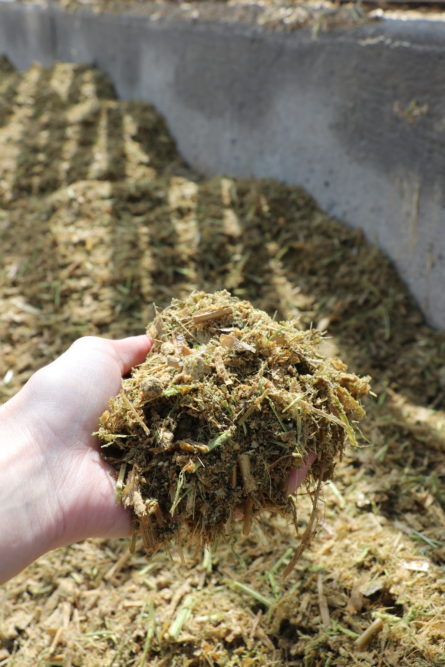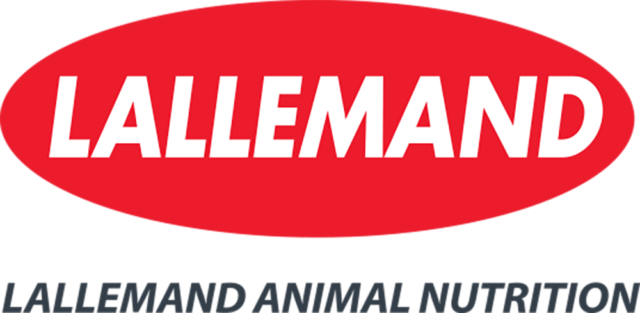It is an accepted concept in dairy nutrition that fiber is important to the dairy cow because of its effect on rumen fermentation and animal health. But what really is fiber? According to your ruminant nutrition 101 class, the answer would be hemicellulose, cellulose and lignin; but this fails to capture the complex makeup of the plant cell wall. The chemical as well as physical nature of fiber have independent effects on the cow, and both should be considered when evaluating the fiber content of a diet or forage.
The neutral detergent fiber (NDF) system is a method of chemically analyzing forages in a nutritionally relevant way. The system separates feedstuffs into two categories of digestible (cellular contents) and potentially degradable (cell wall) feed, but the NDF fraction represents a class of chemical components that are not homogenous and vary in degradability; therefore, NDF must be further fractionated into potentially degradable NDF and undegradable NDF. To quantify the undegradable fraction, researchers at Cornell University evaluated different fermentation lengths and determined that no further degradation occurred after 240 hours of in vitro fermentation (uNDF240). Research has revealed that the uNDF240 content of feedstuffs is highly related to dry matter intake (DMI). Greater uNDF240 results in decreased rumen turnover rate and increased retention time, consequently restricting intake. This effect was observed in a study that evaluated the effect of diets that included either conventional or brown-midrib (BMR) variety corn silage with either high (35.8%) or low (32%) NDF. The BMR corn silage had a uNDF240 of 7.6% while the conventional corn silage had a uNDF240 of 11%. When feeding high-NDF diets, DMI was decreased in diets that used conventional corn silage, but this was not observed in the diets that used BMR. The lower uNDF240 content allowed for greater DMI.
Understanding the degradability and undegradability of fiber is essential for predicting cow response, but it does not consider the physical aspects of fiber. The physical characteristics of fiber, like particle size and density, can influence not only rumen fermentation but also milkfat production and animal health. Physically effective NDF (peNDF) is the current method of measuring a fiber particle’s ability to stimulate chewing and rumen mat development. It is a product of NDF content and the physically effectiveness factor (pef). The pef is on a scale between 0 to 1 where 0 is not physically effective and 1 is completely physically effective. The peNDF content is related to variation in chewing activity, rumen pH and milkfat production between and within different forages. This effect was observed in a study that fed diets with three different particle sizes of alfalfa: fine (0.05 inch), medium (0.16 inch) and long (0.31 inch). The peNDF of the diet increased as the length of the alfalfa increased. The diet with fine alfalfa had significantly greater DMI, lower rumen pH, less total chewing time and lower milkfat production compared to the diets with long- and medium-length alfalfa. This was due to the reduction in rumen mean retention time and an increase in passage rate. It is important to note that there is an assumption within the peNDF system that all fiber will elicit the same chewing response; however, the degradability of fiber can influence its physical effectiveness.
Neither measurement adequately answers the question of what fiber is in a way that predicts cow response. Recently at the Miner Institute, there has been research conducted to connect these two measurements. These researchers have proposed that multiplying the pef by the uNDF240 content will predict the uNDF240 content of the physically effective fraction (peuNDF240). This provides a single measurement that considers both the physical and chemical aspects of fiber in the forage or ration and is designed to measure the amount of undegradable fiber that remains in the rumen for chewing and mat formation. This measurement was based on the findings of a study conducted at the Miner Institute that was formulated for either high (11%) or low (8.9%) uNDF240 and either high (22%) or low (19%) peNDF. This corresponded with a peuNDF240 of 5.4% for the low uNDF240, low peNDF (LULP) diet; 5.9% for both the low uNDF240, high peNDF (LUHP) and high uNDF240, low peNDF (HULP) diets; and 7.1% for the high uNDF240, high peNDF (HUHP) diet. There was greater intake and milk production and less eating time for cows fed the LULP diet compared to the HUHP diet. Interestingly, there were no significant differences in intake, milk production or chewing time between the two intermediate diets, LUHP and HULP, that had the same peuNDF240s. Exploring the validity of this measurement more, data from four experiments conducted at the Miner Institute, including the experiment mentioned above, was analyzed looking specifically at uNDF240, peuNDF240, energy-corrected milk (ECM) and DMI. When looking at the uNDF240 alone, there was a strong relationship between uNDF240 X DMI and uNDF240 X ECM (R2 = 0.72 and R2 = 0.7, respectively). However, when particle size was added, peuNDF240, there was a stronger relationship for both DMI and ECM (R2 = 0.93 and R2 = 0.83, respectively). This illustrates that incorporating particle size and uNDF240 can result in better predictions when interpreting cows’ response to diets. A caveat is that these correlations were based on higher-forage diets (greater than 50% forage) and were formulated with corn silage and grass-based haylage.
It appears that combining the physical and chemical characteristics of fiber provides a valuable measurement to consider when nutritionists are formulating rations for high-producing lactating cows. The stronger predictive relationship between DMI, ECM and peuNDF240 explains variation in performance observed between diets of similar makeup. Although there is still needed information on the peuNDF240 of different forage sources (such as legumes) and how it works in different feeding scenarios, the relationship between peuNDF240 on intake and milk production seems to be a valuable way of describing "what is fiber."









